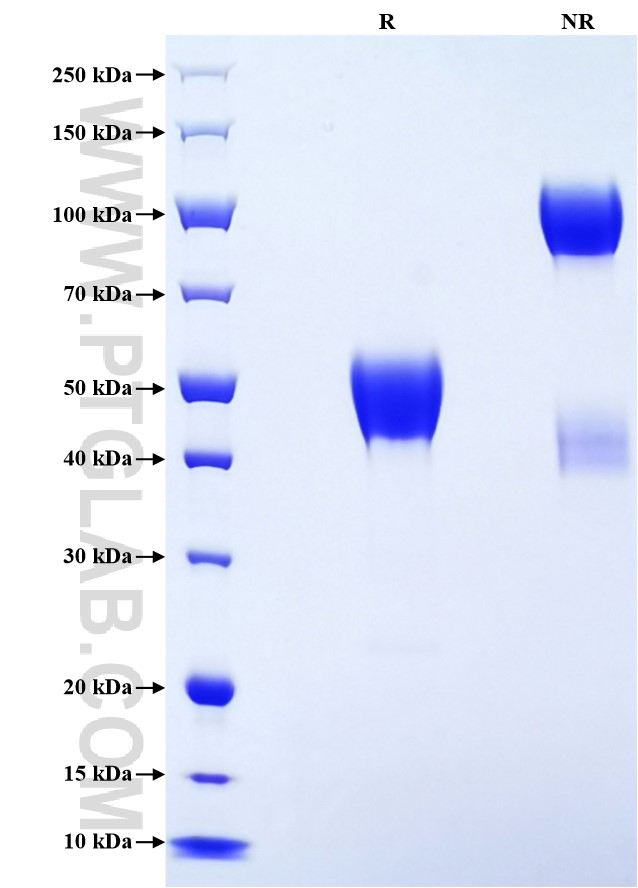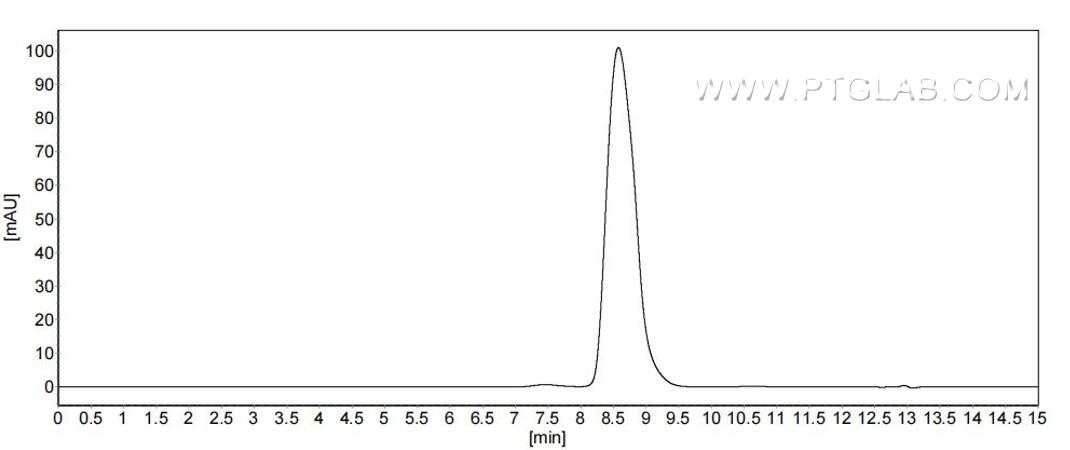Recombinant Human LGALS3BP protein (rFc Tag) (HPLC verified)
种属
Human
纯度
>90 %, SDS-PAGE
>90 %, SEC-HPLC
标签
rFc Tag
生物活性
未测试
验证数据展示
产品信息
| 纯度 | >90 %, SDS-PAGE >90 %, SEC-HPLC |
| 内毒素 | <0.1 EU/μg protein, LAL method |
| 生物活性 |
Not tested |
| 来源 | HEK293-derived Human LGALS3BP protein Val19-Ser140 (Accession# Q08380) with a rabbit IgG Fc tag at the C-terminus. |
| 基因ID | 3959 |
| 蛋白编号 | Q08380 |
| 预测分子量 | 39.4 kDa |
| SDS-PAGE | 42-55 kDa, reducing (R) conditions |
| 组分 | Lyophilized from 0.22 μm filtered solution in PBS, pH 7.4. Normally 5% trehalose and 5% mannitol are added as protectants before lyophilization. |
| 复溶 | Briefly centrifuge the tube before opening. Reconstitute at 0.1-0.5 mg/mL in sterile water. |
| 储存条件 |
It is recommended that the protein be aliquoted for optimal storage. Avoid repeated freeze-thaw cycles.
|
| 运输条件 | The product is shipped at ambient temperature. Upon receipt, store it immediately at the recommended temperature. |
背景信息
The galectins are a family of beta-galactoside-binding proteins implicated in modulating cell-cell and cell-matrix interactions. Galectin-3-binding protein (LGALS3BP, also known as 90K or Mac-2 BP) is a secreted glycoprotein which binds galectin-3, galectin-1, beta1 integrins, collagens and fibronectin. It has been implicated in tumor metastatic processes, as well as in other cell adhesion and immune functions. Levels of LGALS3BP have been found elevated in the serum of patients with cancer and in those infected by the human immunodeficiency virus (HIV).
参考文献:
1. Koths K, et al.J Biol Chem. 268(19):14245-9 (1993). 2. Ullrich A, et al. J Biol Chem. 269(28):18401-7 (1994). 3. Inohara H, et al. Biochem Biophys Res Commun. 201(3):1366-75 (1994). 4. Calabrese G, et al. Cytogenet Cell Genet. 69(3-4):223-5 (1995). 5. Sasaki T, et al. EMBO J. 17(6):1606-13 (1998). 6. Tinari N, et al. Int J Cancer. 91(2):167-72 (2001).



